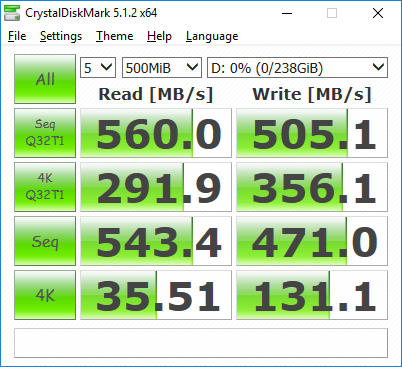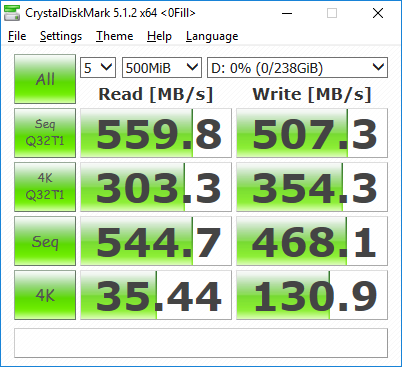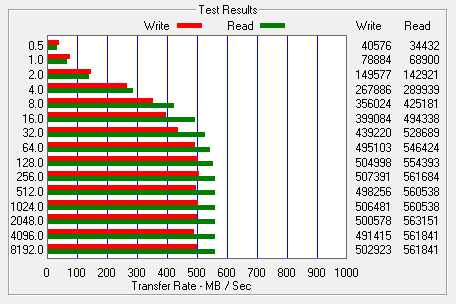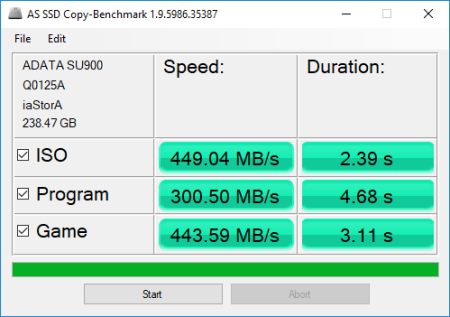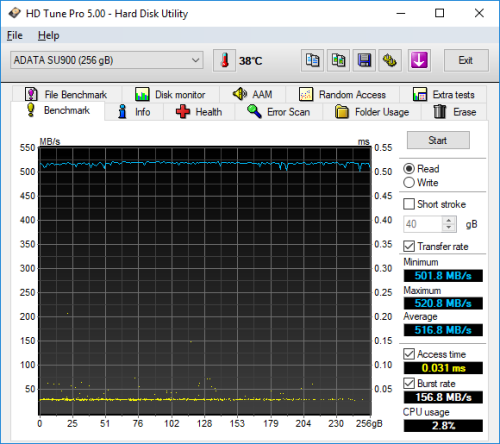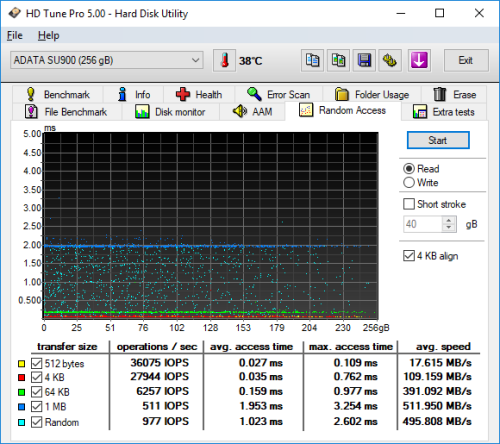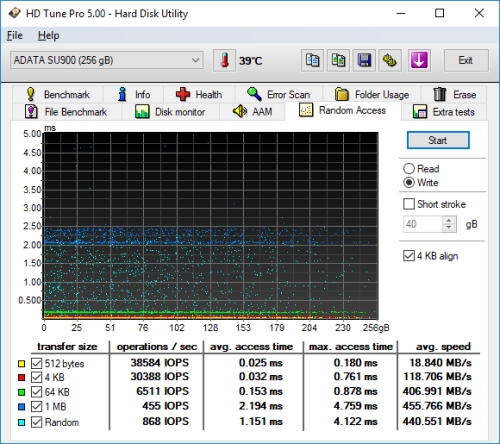

Model: ADATA Ultimate SU900 256GB Solid State Drive
Manufacturer: ADATA Technology
Provided By: ADATA Technology (USA)
ADATA Technology is one of the world's leading manufacturers of high performance memory modules and data storage solutions. Founded in 2001 with a staff of 20, this Taiwanese company set itself apart from the competition early on thanks to its professionalism, industry know-how and eye-catching product designs. Today, ADATA continues to lead the way through constant innovation and development of products that exceed customer expectations. Backed by technical expertise, state-of-the-art manufacturing facilities and premium customer service, ADATA currently offers a variety of products including DRAM modules, USB flash drives, memory cards, solid state drives and portable hard drives.
Earlier this year, ADATA launched its flagship 2.5-inch SATA SSD, the Ultimate SU900. Designed for use in everything from the lightest ultrabooks to high-end desktops, this performance-oriented drive is powered by Silicon Motion's SM2258 controller and is available with up to 2TB of 3D MLC NAND flash. The SU900 also utilizes intelligent SLC caching and a DRAM cache buffer to deliver up to 560 MB/s read and 525 MB/s write speeds. In addition, it features technologies like LDPC error correction, data shaping, wear leveling and a RAID Engine to provide high TBW and eliminate the vast majority of potential data errors.
The Ultimate SU800 is available in 256GB, 512GB, 1TB and 2TB capacities. For this review, ADATA sent us the 256GB version of the drive which is capable of delivering up to 560 MB/s sequential read and 520 MB/s sequential write speeds as well as up to 80,000 random read and 90,000 random write IOPS.
| ADATA Ultimate SU900 256GB Solid State Drive | |||||||||||||||||||||||||||||||||||||
General Specifications
Performance
Environment and Reliability
Dimensions and Weight
Other Features
|
Needless to say, this is only a taste of what the Ultimate SU900 has to offer. To give you an idea of what to expect, we'll take a closer look at ADATA's new SSD and then see how well it performs. Does it have what it takes? Can it deliver the performance and features that we've come to expect from ADATA? Keep reading as we find out.
The Ulimate SU900 comes in an eye-catching, black and gold box. Along with a picture of the drive, the front advertises many of its key features including its 256GB capacity, SATA 6Gbps interface and 3D NAND. The back of the box provides a bit more information regarding the SU900's features and performance. Inside, you'll find the SSD, a 3.5" adapter bracket, a mounting spacer for use with traditional 9.5mm drive bays, mounting screws and a small, fold out guide containing warranty and service information.

Physical Features:
The Ultimate SU900 looks very similar to ADATA's other 2.5-inch SSDs. The top of the outer casing is made out of black plastic with a large, black and gold sticker showing that the SSD is part of the company's SU900 series. The bottom of the casing is made out of metal and is painted black to match the top. The sticker on the bottom shows information like the model number, warranty code and WWN code.


Like the Ultimate SU800, the SU900 uses SMI's SM2258 controller. Designed specifically to meet the unique demands of managing 3D TLC NAND, this customizable turnkey controller solution employs SMI's proprietary NANDXtend error-correcting and data protection technology to triple the P/E cycles of 3D TLC NAND. The SM2258 also features advanced Direct-to-TLC and SLC caching algorithms for optimal sustained read and write performance.


For the 256GB version of the SU900, ADATA has opted to use its own Micron manufactured 3D MLC NAND flash. Looking at the picture above, you can see that there are four 32GB NAND flash packages on either side of the PCB. The drive also has a single 256MB NANYA DDR3L memory chip that is used for caching.
Like ADATA's other SSDs, the Ultimate SU900 works with their SSD Toolbox. This free downloadable utility is an easy way for users to obtain information about their drives and change various system settings. Additionally, it can be used to speed up your SSD and even improve the endurance of a drive.
When you run ADATA SSD Toolbox, the main screen displays information about your drives. From here, users can view information like the capacity, used space, temperature, health and lifespan of each drive. By clicking on the tabs, you'll also find information like the model name, firmware version, serial number and World Wide Name (WWN).

The SSD Toolbox offers two different diagnostic scans. The quick diagnostics scan runs a basic test on free space and is usually completed in under two minutes. The full diagnostics scan runs a read test on all used space and a write test on all free space of the selected drive. Needless to say, the full scan takes much longer to complete.

ADATA's SSD Toolbox also includes a number of utilities. Along with the ability to do a secure erase, users can update a drive's firmware, upgrade the software and export a log file containing information about your system and drives.
The System Optimization option gives users the ability to run a TRIM command on a selected SSD. Users also have the ability optimize their OS by enabling features like superfetch, prefetch and automatic defragmentation.
SSD Toolbox can also be used to view information about your system. The utility displays a number of things including the operating system, CPU, amount of usable RAM and the model and BIOS version of your motherboard.
The test system used in this review is equipped with an Intel Core i7-6700K CPU, GIGABYTE GA-Z170X-UD3 motherboard, 32GB (16GB x 2) of Crucial Ballistix Sport LT DDR4 memory, Samsung 960 PRO 512GB SSD and a GIGABYTE GeForce GTX 1060 WINDFORCE OC 6G graphics card. For the operating system, I installed a fresh copy of Windows 10 Enterprise.
To test the performance of ADATA's Ultimate SU900 SSD, I ran a series of benchmarks using CrystalDiskMark, HD Tach RW, ATTO Disk Benchmark, AS SSD, HD Tune Pro, Anvil's Storage Utilities, Iometer and PCMark 8. For comparison, I've also included test results from the Plextor S3C, Toshiba OCZ VX500, ADATA Ultimate SU800, Plextor S2C, Crucial M300, Plextor M7V, PNY CS1311, OCZ Trion 150, PNY CS2211, Plextor M6V, Crucial BX200, OCZ Trion 100, Kingston HyperX Savage, Crucial MX200, OCZ Vector 180, Kingston BX100, Samsung 850 EVO M.2, Samsung 850 EVO mSATA, AMD Radeon R7, Silicon Power Slim S80, Samsung SSD 850 EVO, OCZ ARC 100, SanDisk Ultra II, Crucial MX100, SanDisk Extreme Pro and Samsung SSD 850 PRO.

As I mentioned earlier, the Ultimate SU900 is based on SMI's SM2258 controller chip. Looking at the screenshot above, you can see that it performs equally well with both incompressible (0%) and compressible (100%) data.
CrystalDiskMark 5.1.2:
First, I ran a few quick tests using CrystalDiskMark. This benchmark tool measures the performance of a storage device by testing its sequential read and write speeds as well as its random read and write speeds using blocks 512K and 4K in size.
According to ADATA, the 256GB version of the SU900 is capable of reading at 550 MB/s and writing at 505 MB/s when tested with CrystalDiskMark. Looking at the screenshot above, you can see that the drive had no problems reaching these speeds in the sequential read and write tests.
The SU900 performed equally well when using highly compressible 0x00 (0 Fill) data. This time around, the drive was able to read at 559.8 MB/s and write at 507.3 MB/s.
HD Tach RW 3.0.4.0:
Next, I used HD Tach to test the Ultimate SU900's read, write and burst speeds as well as its seek times and CPU usage.

Looking at the screenshot above, you can see that the SU900 had average read and write speeds of 465.9 MB/s and 238.0 MB/s respectively, as well as a burst speed of 494.7 MB/s. The screenshot also shows that, unlike most other MLC-based SSDs, the SU900 uses some sort of SLC caching. The drive starts writing at about 400 MB/s and then drops to about 70 MB/s when the write operation exceeds the size of the cache.
ATTO Disk Benchmark 2.46:
I also used ATTO Disk Benchmark to test the Ultimate SU900's sequential read and write speeds. The tests are run using blocks ranging in size from 0.5KB to 8192KB and the total length set to 256MB.
When tested with ATTO, the SU900's read speeds topped out at about 563 MB/s and its write speeds at 507 MB/s.
AS SSD:
AS SSD is a benchmark designed specifically for solid state drives. The application contains five synthetic tests which are used to determine the sequential and random read and write performance of a drive.
AS SSD also includes a copy benchmark. This test copies an ISO (two large files), program (many small files) and game (small and large files), returning the speed and duration of each.
HD Tune Pro 5.00:
Next, I ran a series of tests using HD Tune Pro. This hard disk utility measures a drive's performance by testing its sequential read and write speeds as well as its access time, burst rate and CPU usage. For this review, I'm also going to use it to benchmark the Ultimate SU900's random read and write speeds, random access times and the number of operations per second.
The SU900 performed fairly well when benchmarked with HD Tune. The drive had average read and write speeds of 516.8 MB/s and 446.2 MB/s, respectively, and a burst rate of 156.8 MB/s when reading.
When reading 4KB blocks, the SU900 reached 27,922 IOPS and had an average speed of 109.159 MB/s. The drive was faster when writing, reaching 30,388 IOPS with an average speed of 118.706 MB/s.
Anvil's Storage Utilities:
Anvil's Storage Utilities is another new benchmark designed with SSDs in mind. The standard storage benchmark measures a drive's performance by testing its transfer speeds, access times and IOPS.

Iometer:
Lastly, I ran a series of tests using Iometer. This tool can be configured to benchmark a number of things. In this case, I used it to measure the Ultimate SU900's read and write speeds and the number of operations per second. The tests were run using random bytes and a queue depth of 3.

The SU900's performance was very similar to what we saw in our other tests. The drive was able to read at 535.93 MB/s and write at 474.81 MB/s.

The SU900 also performed relatively well when doing random reads and writes. In our tests, the drive was able to read at 136.2 MB/s and write at 262.99 MB/s.

According to ADATA, the 256GB version of the SU900 is capable of 80,000 IOPS when reading and 90,000 IOPS when writing 4K blocks. In our tests, the drive reached 34,867 random read IOPS and 67,327 random write IOPS. As with most drives, the SU900 performed better at higher queue depths. With the queue depth set to 32, it reached 73,437 random read IOPS and 79,684 random write IOPS.
Vantage PCMark 8 - Storage Test:
PCMark 8 is a complete benchmark for Windows. It includes five benchmark tests, each designed around a specific scenario. The storage benchmark measures drive performance using real-world traces recorded from Adobe Creative Suite, Microsoft Office and a selection of popular games.

PCMark 8 also includes a consistency test which measures the performance consistency and degradation tendency of a storage system. The test reports the performance level at the start, the degraded steady-state and the recovered state as well as the number of iterations required to reach them. For this test, we are focusing on the Adobe Photoshop (Heavy) trace and will look at both the bandwidth and latency of the drive


The SU900 didn't do as well as some of the other drives in this test. Its bandwidth dropped below 50 MB/s during the degradation and steady phases, pushing its latency above the 1000ms mark. The SU900's performance increased somewhat during the recovery phase. However, it still lagged well behind the other drives, topping out at only 95 MB/s.
TRIM Performance:
While SSD's offer many benefits, there are some downsides to using flash memory. One of the biggest issues people run into is performance degradation. Over time, an SSD will run out of fresh blocks and will have to write over data the file system has marked as deleted. This procedure is very complicated and can slow an SSD's write speeds considerably.
To fix this problem, most manufacturers have added TRIM support to their SSDs. The TRIM command allows an operating system, such as Windows 7, to tell an SSD which data blocks are no longer in use. Using this information, the drive pro-actively erases these blocks and adds them to the free block pool.

To test the SU900's TRIM and garbage collection functions, I first put the drive in a "dirty" state. I used Iometer to fill the entire drive and then ran a random write test for 30 minutes. This had little impact on the SU900's read speed. However, its average writing speed dropped to a mere 20.9 MB/s.

ADATA Ultimate SU900 - Dirty
To see how well the SU900 could recover, I let the computer sit for about 30 minutes and then reran the test. The drive's average read speed climbed up to 458.9 MB/s. However, its write speed lagged behind, averaging out at only 151.6 MB/s.

ADATA Ultimate SU900 - After TRIM
Lastly, I used Parted Magic to perform a secure erase on the SU900. With the drive wiped clean, it had average read and write speeds of 466.0 MB/s and 392.7 MB/s, respectively.

ADATA Ultimate SU900 - Secure Erased
Final Thoughts:
The ADATA Ultimate SU900 is a great choice for the consumer or enthusiast looking to improve the performance of their existing desktop or notebook computer. The drive combines Silicon Motion's SM2258 controller with 3D MLC NAND to deliver good performance, enhanced features and a high level of endurance at a price that isn't much more than some TLC NAND-based SSDs. In our sequential read and write tests, the 256GB version of the SU900 was able to read at speeds as high as 563 MB/s and write at speeds in excess of 505 MB/s. It also did surprisingly well in our random write tests, producing more than 67,000 IOPS at low queue depths.
Of course, fast read and write speeds aren't the only things the Ulimate SU900 has to offer. In addition to a large DRAM cache buffer, the drive uses an intelligent SLC caching algorithm to boost read and write performance. The SU900 also features advanced LDPC error correction, data shaping, wear leveling and a RAID Engine to ensure data integrity and extend the lifespan of the SSD. To top it all off, the drive is backed by a 5 year warranty.
The Ultimate SU900 is available now in 256GB, 512GB and 1TB capacities. Prices on Amazon.com start at $108 for the 256GB version and go up to $390 for the 1TB drive. The 2TB model has not shipped at the time of this review and there is no clear indication as to when it will be available.
Highs:
- Available in 256GB, 512GB, 1TB and 2TB capacities
- Silicon Motion SM2258 controller
- 3D MLC NAND
- Good sequential and random read and write performance
- Huge SLC cache
- RAID Engine, Data Shaping and LDPC ECC technologies
- Ultra-slim form factor
- Includes mounting spacer for 9.5mm applications
- DEVSLP power mode
- SSD Toolbox and Migration Utility
- Reasonably priced for MLC NAND-based drive
- 5 year warranty
Lows:
- Write speed drops considerably when SLC cache is full
- Does not support hardware based encryption





